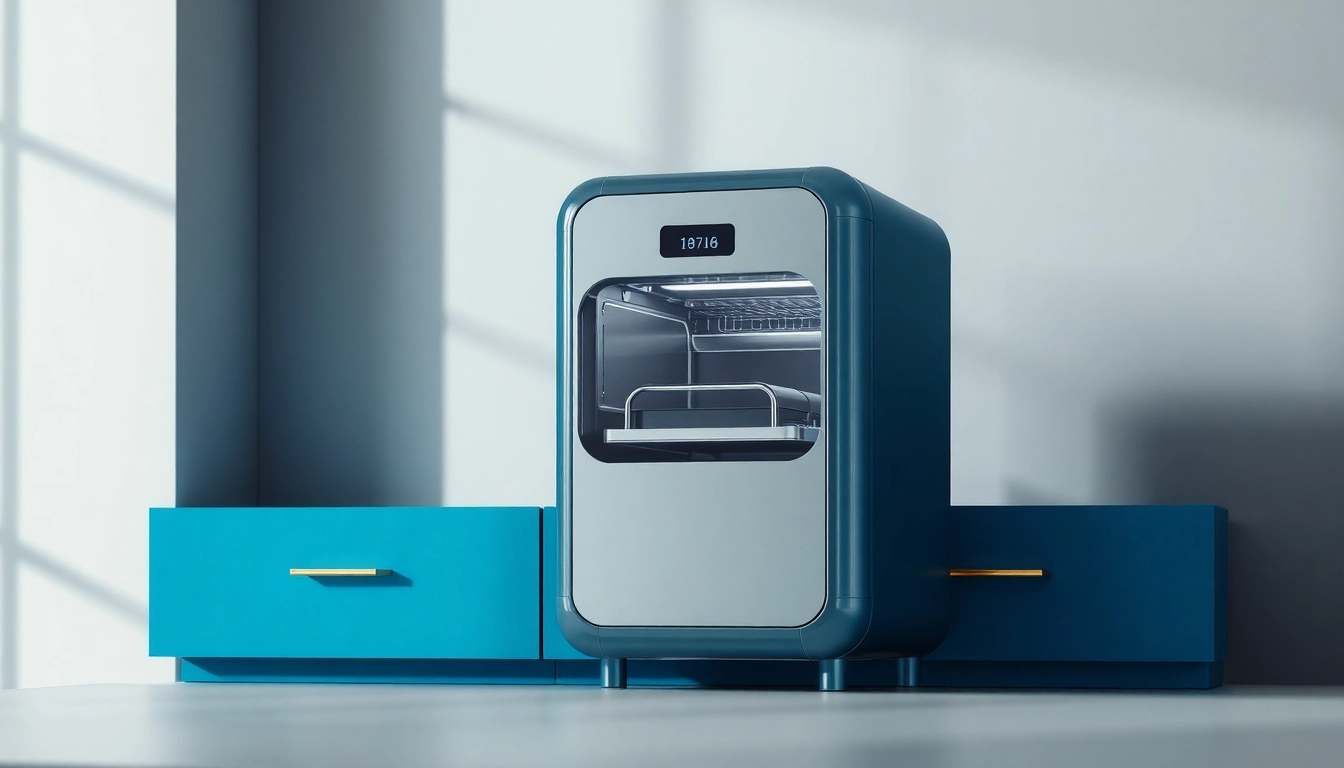Understanding AI Design Solutions
What Are AI Design Solutions?
Artificial Intelligence (AI) design solutions encompass a broad range of software and tools that utilize machine learning algorithms to enhance the design process across various fields, including graphic design, interior design, product design, and digital content creation. Essentially, these solutions blend creativity with technology, streamlining workflows and enabling designers to focus more on innovation and less on mundane tasks. From automated graphic design platforms to intricate 3D modeling tools, AI design solutions are reshaping how designers conceptualize and execute their projects.
The increasing demand for efficiency and creativity has propelled the popularity of AI in the design realm. With solutions such as automated branding generation, layout refinements, and even style transfer applications, designers now leverage AI to generate vast design options quickly. The integration of AI allows both novice and seasoned designers to push creative boundaries, making design more accessible and effective.
For those looking for innovative approaches to enhance their creative processes, AI design solutions are revolutionizing industry standards and expectations.
The Evolution of Design through AI
The journey of AI within the design landscape began with rudimentary tools capable of processing basic commands to current advanced systems that understand and predict design trends. Historically, design relied heavily on human intuition and manual labor, but advancements in technology have introduced automation that enhances creativity while reducing workload.
The introduction of CAD (Computer-Aided Design) tools in the late 20th century marked the starting point of AI’s integration into design. These tools allowed designers to create detailed drawings and models more efficiently. Fast-forward to today, and we see powerful AI-driven applications that not only assist in visual representation but also analyze user preferences, automate repetitive tasks, and even generate design concepts based on predefined parameters or datasets.
Notable developments include generative design technology, which utilizes algorithms to produce numerous design iterations based on user-specified goals and constraints. Innovations such as Adobe’s Sensei and Autodesk’s generative design software illustrate how AI technologies are progressively shaping the future of design.
Key Benefits of Using AI in Design
The implementation of AI design solutions carries several significant benefits that can dramatically enhance productivity and creativity in the design process. Some of the key advantages include:
1. Efficiency and Time Savings: AI can automate repetitive tasks, such as resizing images, preparing layouts, or generating presentation templates. This automation means designers can spend valuable time on more complex and creative aspects of their work.
2. Enhanced Creativity: AI systems can analyze vast amounts of data to draw inspiration from a multitude of sources. This capability often leads to innovative design solutions that may not have been considered without AI input.
3. Personalization: AI systems can tailor content and designs to meet specific user needs and preferences. For instance, AI tools can analyze user behavior on websites, enabling designers to create more impactful customer experiences through personalized design elements.
4. Cost-Effectiveness: By streamlining workflows and reducing the need for extensive manpower on routine tasks, businesses can save on operational costs. This efficiency allows for budget reallocation toward more critical initiatives, such as marketing and customer engagement.
5. Accessibility: AI design tools democratize design by making high-quality design accessible to individuals without extensive skills. Applications offering templates and design recommendations enable non-designers to create professional-quality visual content.
Types of AI Design Tools Available
Graphic Design Tools
AI has brought remarkable advancements to graphic design, with various applications catering to different design needs and audiences. Some notable graphic design tools powered by AI include:
– Canva: Known for its user-friendly interface, Canva includes features like Magic Design, which allows users to generate designs automatically based on textual input or media uploads. It serves as an ideal platform for businesses looking to create social media graphics and marketing materials quickly.
– Adobe Creative Suite: Adobe integrates AI through its Sensei technology to offer smarter tools for photographers, video editors, and graphic designers. Features like automatic color matching and content-aware fill simplify the design process.
– Figma: This collaborative design platform uses AI to provide suggestions and remove friction from the design workflow. Tools like plugins for data visualization and prototyping enable enhanced creativity and assertion in designs.
Interior Design Solutions
In the realm of interior design, AI is an invaluable tool for automating floor plans, rendering visualizations, and even predicting spatial utility. Here are noteworthy solutions:
– Spacely AI: Offering cutting-edge rendering solutions, Spacely AI enables interior designers and real estate professionals to create photorealistic renderings quickly. This tool incorporates real-time feedback to refine designs based on client preferences dynamically.
– RoomGPT: A revolutionary tool in AI interior design, RoomGPT allows users to upload images of their spaces and receive AI-generated design ideas in return. It serves as an interactive assistant for both professional designers and homeowners seeking inspiration.
– Planner 5D: This design tool utilizes AI algorithms to assist users with room layout, design recommendations, and 3D visualizations in real-time, simplifying the decision-making process for clients.
Logo and Brand Identity Design
The branding landscape has been transformed with the advent of AI-centric logo design systems. These tools help create compelling brand identities with minimal effort:
– Looka: Looka generates logos based on user inputs and preferences, providing multiple iterations for users to choose from. It combines AI with a user-friendly interface, enhancing the branding creation process.
– Designs.ai: This platform allows users to create logos, videos, and other design elements seamlessly, utilizing AI to analyze design trends and suggestions based on user input. The result is a comprehensive branding package tailored to unique specifications.
– Tailor Brands: This AI-driven platform customizes logos and a range of branding materials for businesses. Leveraging machine learning, it offers creative solutions that resonate with target audiences, ensuring brand coherence.
Implementing AI Design Solutions in Your Workflow
Steps to Integrate AI into Your Design Process
Integrating AI design solutions into an established workflow requires strategic planning and execution. Here are essential steps to effectively implement these tools:
1. Identify Design Needs: Determine areas within your existing design process where AI could add value, such as automation of repetitive tasks or data analysis for trend forecasts.
2. Evaluate Available Tools: Research AI tools suitable for your needs. Consider their capabilities, user interface, pricing, and support services. Trials and demos can provide a practical understanding of their functionality.
3. Train Your Team: Educate your team about the advantages of AI design tools and how to utilize them effectively. Investing time in training maximizes the potential of these solutions.
4. Pilot Implementation: Start with a pilot project to test the effectiveness of the AI tools with smaller scope tasks. Assess user feedback and measure efficiency gains to gauge success before full integration.
5. Iterate and Optimize: Use insights gained from the pilot to refine processes. Continuous assessment and adjustments can lead to optimized integration of AI tools within your design workflow.
Best Practices for Effective Collaboration
Collaborating in a design environment enhanced by AI requires communication, openness to new tools, and adaptation to shifting roles. Here are best practices:
1. Foster a Culture of Experimentation: Encourage team members to explore AI tools creatively without fear of missteps. An experimental mindset can lead to innovative breakthroughs.
2. Utilize Collaborative AI Design Features: Many AI design tools incorporate collaboration features. Use these capabilities to share insights and gather feedback across teams, leading to a more integrated design solution.
3. Regular Feedback Loops: Establish regular check-ins to discuss progress, challenges, and opportunities. Encouraging open dialogue about how AI is impacting workflows can foster a better understanding and acceptance of these solutions.
4. Cross-Disciplinary Engagement: Engage team members from various backgrounds within the organization. Input from different perspectives, such as marketing and sales, can lead to richer design outcomes.
Measuring the Impact of AI Design on Your Work
To ensure the successful integration of AI solutions, organizations need to track performance metrics that demonstrate their impact on the design process. Here are useful metrics to consider:
1. Productivity Metrics: Measure time savings before and after AI implementation. Track whether tasks are completed faster and if significant workloads are reduced.
2. Quality of Design Outputs: Assess if design quality improves with AI tools in use. Solicit feedback from stakeholders and clients to determine satisfaction levels with design innovations.
3. Return on Investment: Calculate the cost versus benefits of employing AI tools within your design workflow. Tracking time savings and quality improvements can offer insight into the overall ROI.
4. User Engagement: For brands, engagement metrics from AI-generated design content can provide valuable insights into client preferences and reaction.
Case Studies: Success Stories of AI in Design
Brand Transformations Using AI Design Solutions
The practical application of AI in design has yielded impressive transformations for companies across various sectors. Here are a few notable examples:
– Nike: Leveraging AI to analyze its customer preferences, Nike has successfully personalized marketing campaigns and designs, offering customers tailored experiences that led to increased sales and brand loyalty.
– Starbucks: The coffee giant utilized AI to optimize store layouts and product offerings based on customer demographics. This move allowed for localized marketing strategies and increased foot traffic.
Innovative Projects Enabled by AI Tools
AI-driven tools have catalyzed the development of innovative projects, showcasing their potential in diverse applications:
– McKinsey & Company: Their AI design team employed generative design tools to create spatial layouts for offices, mitigating waste and maximizing engagement in their workspaces, resulting in a better employee experience.
– Airbnb: By using AI algorithms, Airbnb has refined its visual design elements based on user behavior, leading to improved customer satisfaction rates and conversions.
Lessons Learned from Implementing AI
Reflecting on the integration of AI design solutions provides actionable insights for future endeavors:
– Flexibility is Key: Design teams need to remain adaptable. As AI tools continue to evolve, ongoing training and a willingness to experiment are essential for maximizing benefits.
– Collaboration Drives Innovation: Engaging with interdisciplinary teams to leverage AI insights leads to richer creative solutions compared to a narrow focus within design teams alone.
– Human Insight is Unreplaceable: While AI offers robust analytics and design features, human creativity, intuition, and insight remain irreplaceable ingredients in any successful design strategy.
The Future of AI in Creative Industries
Emerging Trends and Technologies
As AI technology progresses, several trends are worth monitoring to understand its implications for the future of design:
1. Integration with Augmented Reality (AR): The use of AI to enhance AR applications can transform design experiences, offering users real-time interaction and visualization.
2. Advances in Natural Language Processing: AI systems capable of understanding human language nuances will change how users interact with design tools, making processes more intuitive.
3. Personalization at Scale: AI’s ability to analyze consumer behavior in real-time will allow brands to offer increasingly tailored design solutions that resonate with target audiences on a deeper level.
4. Sustainability Focus: Many AI design innovations are centered around creating sustainable products and solutions, minimizing waste, and enhancing resource efficiency.
The Role of AI in Creative Collaboration
Collaboration among creative professionals is vital to producing exceptional design. AI enhances this collaboration by providing tools that enable seamless sharing, feedback, and iteration. As AI systems become better at understanding human preferences and ideas, they will foster deeper collaboration rather than merely automating tasks.
Preparing for a Hybrid Future of Design
The convergence of AI technology and human creativity will define the future of design. Preparing for this hybrid reality necessitates cultivating a mindset that embraces technology as an enabler, not a replacer. Designers need to develop skills alongside AI literacy to thrive in an evolving landscape, ensuring they harness the vast potential of AI-driven design solutions.
In conclusion, AI design solutions are not just tools for efficiency; they represent a paradigm shift in how creative work can be approached, executed, and revolutionized for future generations in the design profession. By fully embracing these technologies, designers can achieve unprecedented levels of creativity, innovation, and success.


